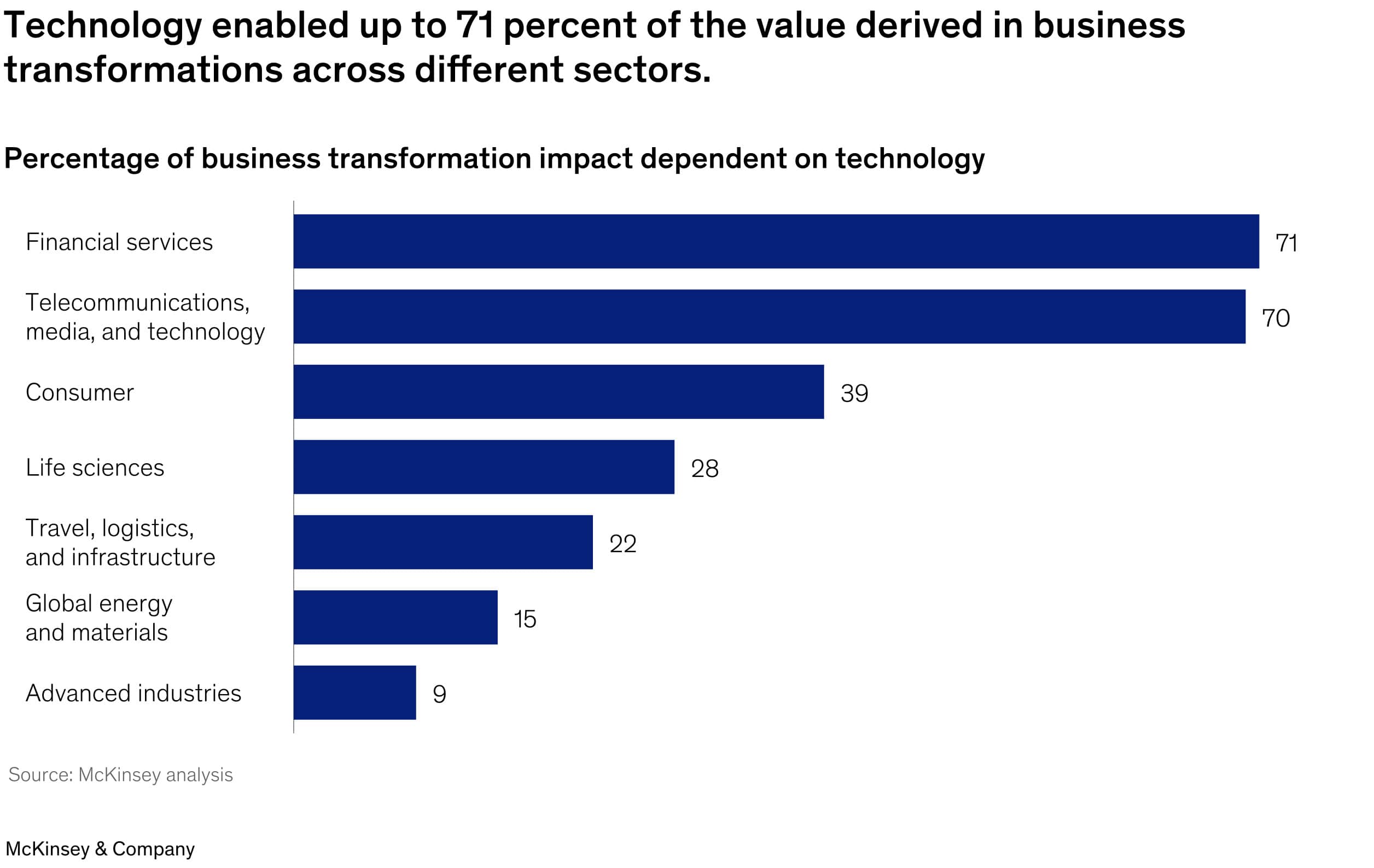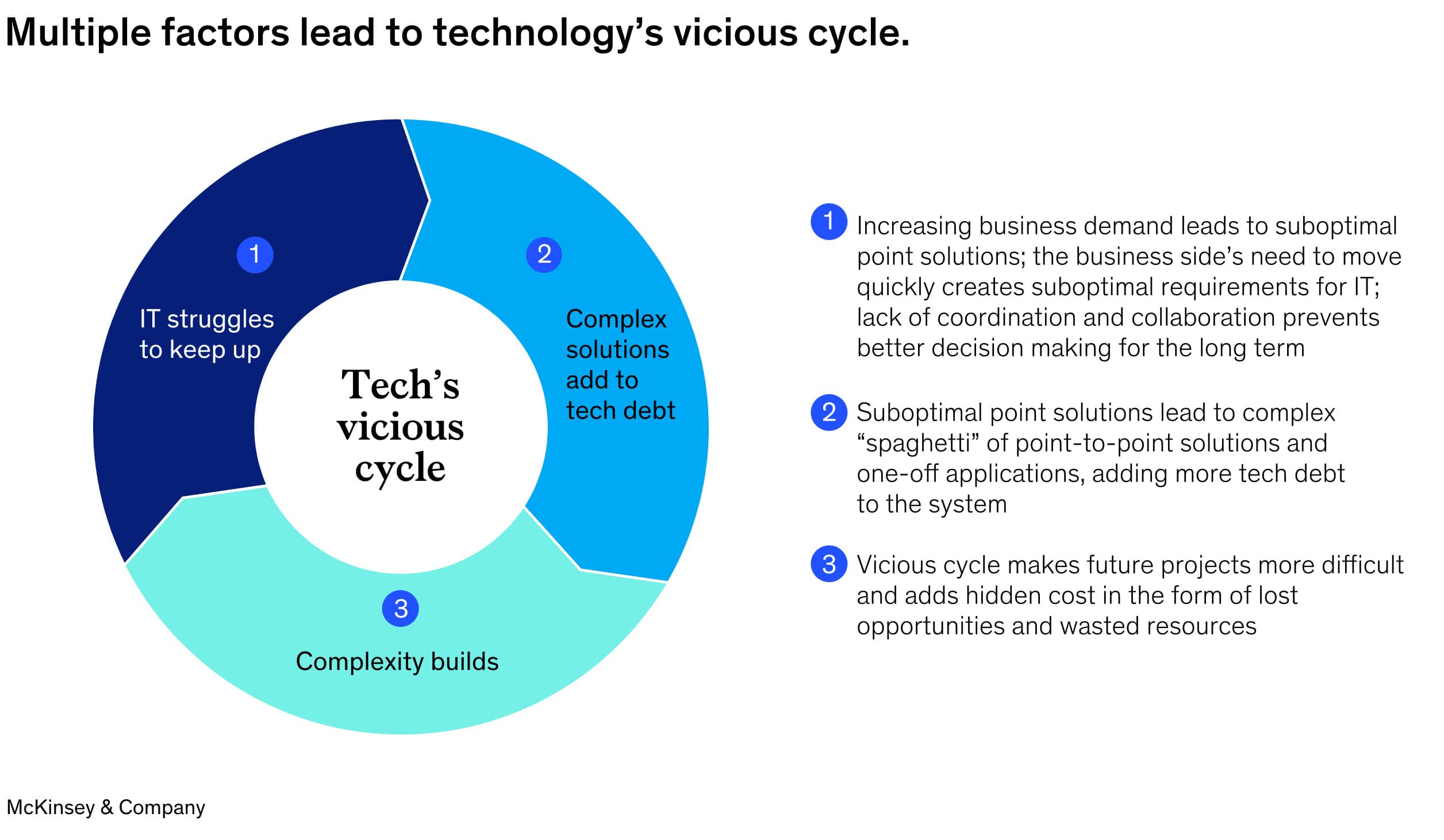By Will Au, Vice President, Engineering Services
Learn how integration solutions are helping organizations increase agility and reduce tech debt.
The costs of technical debt are vast, and its impact on organizations has been growing in complexity. The numbers alone are staggering, with organizations using an average of 30% of their IT budget and 20% of their IT human resources to manage technical debt. But even more startling than the literal costs, perhaps, are the insidious effects it has on overall business growth, with 70% of tech leaders agreeing technical debt has a major impact on their ability to drive innovation.
Tech debt concerns are growing exponentially as businesses continue to rapidly modernize their systems and IT infrastructure, with tech debt also rising to the third biggest challenge to digital transformation in 2023 – moving up the ranks from the sixth biggest obstacle in 2022. The study also revealed tech debt plagued 86% of organizations over the course of last year, resulting in a limited ability to innovate, meet service level agreements (SLAs), and avoid outages and downtime.
In essence, technical debt can act as a roadblock to organizational agility and financial stability in the long run. With more businesses scrambling to modernize and update their tech stacks as quickly, efficiently, and cost-effectively as possible, understanding the true costs of tech debt — and finding ways to mitigate it — will become pivotal for driving digital transformation.
So what is tech debt, exactly?
The term “tech debt” was initially coined around around two decades ago by software developer Ward Cunningham to describe the implied costs that come when implementing suboptimal solutions for the sake of speed, with the understanding that those elements will have to be reworked in the future for optimal performance. Similar to financial debt, technical debt accrues interest (in the form of dollar signs or innovation barriers) that your organization will have to pay back down the road.
Also known as software debt or code debt, tech debt particularly affects the application development arena. In a typical tech debt scenario, development teams may put off the task of remediating flaws or security defects to rush a software release to market as soon as possible. Another scenario might be that developers may intentionally leave out a particular software feature (one that might have major usability or security implications), in favor of functionality that’s deemed more cool or profitable.
How is tech debt hurting businesses?
Research by McKinsey indicates that as much as 71% of the impact from business transformations depends on technology. Put another way, investments in a capable tech stack enabled nearly three-quarters of the value derived in business transformations across different sectors. However, tech debt actively stifles this progress, accounting for about 40% of IT balance sheets. Typically, companies pay an additional 10% to 20% to address tech debt on top of the costs of any project.

[Image Source: McKinsey & Company].
Tech debt may originate from a range of practices, including not updating legacy systems and solutions, favoring fast technology delivery over long-term benefits, cutting corners to satisfy deadlines, or implementing one-off solutions in order to meet business priorities. Failure to rectify these issues results in what McKinsey describes as a “vicious cycle” of tech debt.

[Image Source: McKinsey & Company]
For today’s organizations, custom-coded, point-to-point API integrations are also a major source of technical debt. Point-to-point integrations are heavily resource-intensive and manual processes, typically relying on one or a few highly trained developers to configure. As a result, these integrations are difficult to scale or manipulate, leading to the accrual of more tech debt that inhibits an organization’s ability to effortlessly launch new projects, connect systems and applications to streamline workflows, or update and integrate their tech stack.
3 ways iPaaS helps eliminate tech debt
Integration platform as a service (iPaaS) solutions are a fundamental component to solving the tech debt problem. With companies of all sizes now using a diverse mix of cloud and on-premise resources, legacy systems, and SaaS applications, iPaaS provides a single solution for non-technical staff and developers alike to integrate environments and connect data, application, and business processes. Here are three ways iPaaS solutions can help prevent and reduce technical debt:
- Standardization, Centralization, and Reusability: By standardizing and centralizing integration practices with a single platform, development teams can avoid ad-hoc or siloed approaches that lead to inconsistent or error-prone integrations. Plus, iPaaS platforms often offer a wide range of pre-built connectors and templates for popular systems and applications to accelerate time-to-value and implementation speed without sacrificing project performance. By leveraging reusable components, IT teams can accelerate integration development, reduce code duplication or errors, and ensure consistent integration patterns, reducing the potential for introducing technical debt.
- Rapid Development and Deployment: iPaaS platforms provide visual development tools, drag-and-drop interfaces, and low-code capabilities that accelerate the development and deployment of integrations. In addition to the standardization provided with an iPaaS, this rapid development approach reduces the time spent on manual coding, debugging, and maintenance. By streamlining the integration development lifecycle in a more strategic way, you can minimize the chances of introducing errors or incomplete functionality, reducing the potential for tech debt accumulation.
- Monitoring, Management, and Scalability: With advanced monitoring and management capabilities, iPaaS platforms allow developers to track the performance, reliability, and health of their integrations in real-time. With this data at their fingertips, development teams can quickly identify and address any issues, such as performance bottlenecks, errors, or compatibility problems, before they escalate and contribute to technical debt.
A well-designed iPaaS will offer easy-to-use tools and capabilities for creating, deploying, managing, and monitoring Application Programming Interfaces (APIs) – the binding agent or building blocks for modern IT environments. An iPaaS can also replace custom code that could lead to tech debt because it is not being maintained, updated, or simply unsupported because the developer resource is no longer with the company.
Low-code iPaaS solutions take tech debt reduction a step further by using a combination of automation, AI, and analytics to identify potential problems early in a project or process, and take corrective measures in real time. iPaaS tools can also assist in updating unintuitive systems, digitizing paper-based processes, and modernizing legacy applications.
What are the benefits of eliminating tech debt?
Obsolete or outdated technology can stifle transformation and innovation. In contrast, taking steps to eliminate tech debt facilitates positive outcomes such as revenue growth, a reduction in business risk, and increased innovation.
This is why eliminating tech debt should be a priority for any organization; and iPaaS gives you a framework that eliminates the need to cut corners with your integrations. With a robust iPaaS solution, businesses can create greater efficiencies, build a stronger foundation for future innovation, and free up resources for growth.



